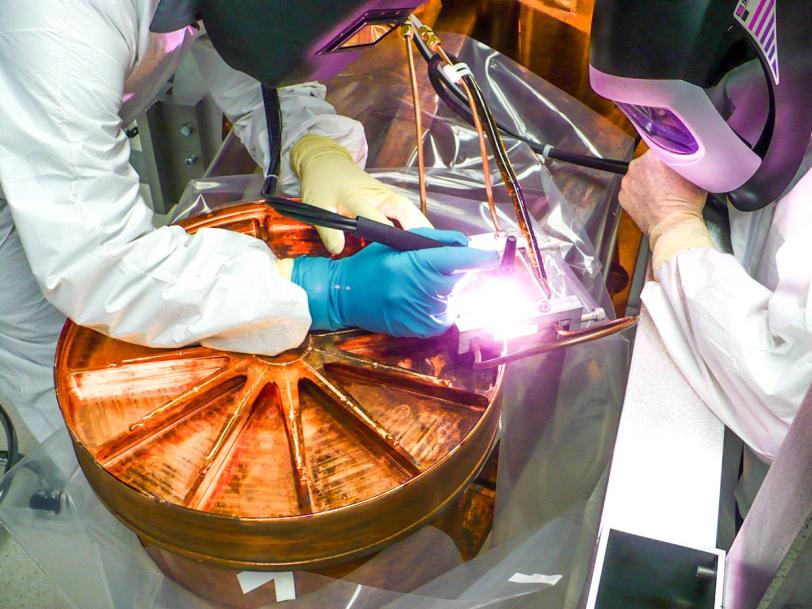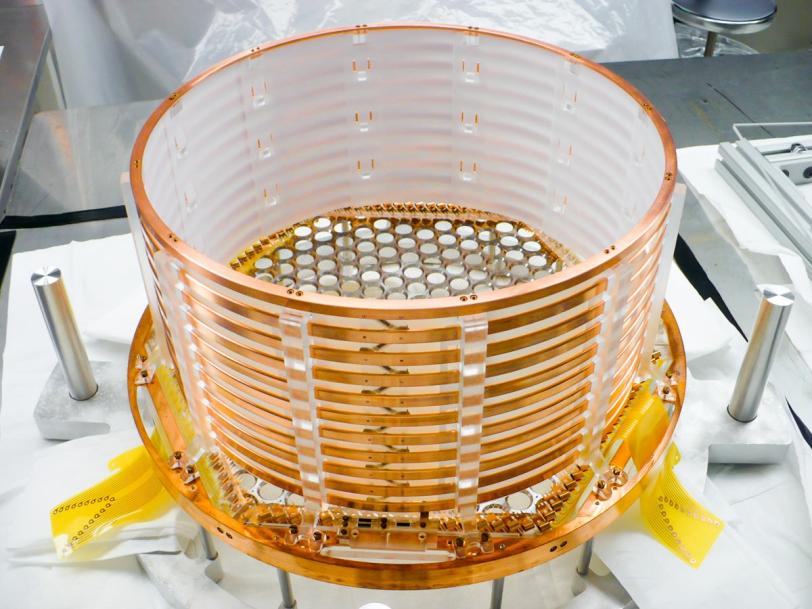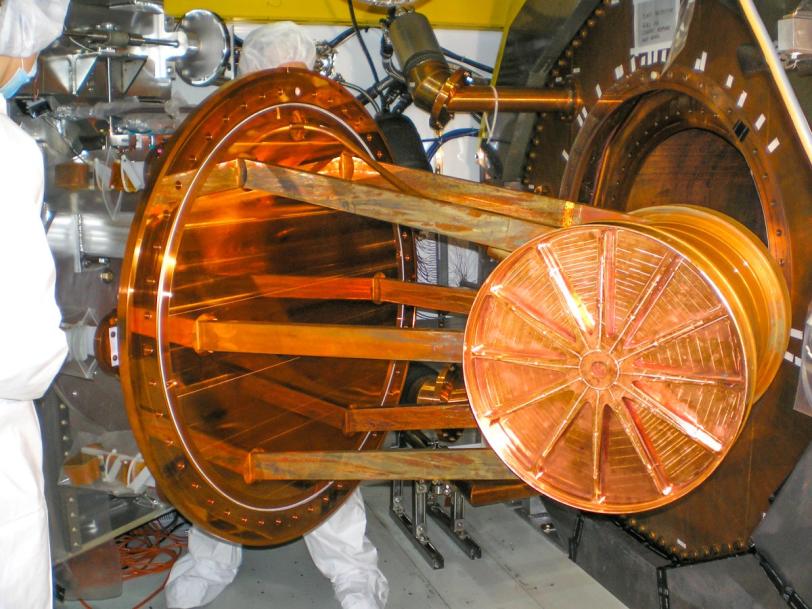Scientists Search for Exotic Decay with Straightforward Implications
If it exists, a type of decay called neutrinoless double-beta decay will show that neutrinos are their own antiparticles and can help scientists determine their masses.
By Lori Ann White
Two years ago researchers began using a tank of liquid xenon installed more than 2,000 feet deep in a salt formation in the southeastern corner of New Mexico to study neutrinos.
They're looking for clues to one of the biggest puzzles about the tiny particles: What is their mass? Finding the mass of the neutrino can help answer big questions such as how the universe grew into its present form.
This tank of liquid xenon, located near Carlsbad, New Mexico in the Waste Isolation Pilot Plant (WIPP), is the Enriched Xenon Observatory – 200 (EXO-200), the most sensitive instrument of its kind in the world. In a progress report published in the journal Nature, the scientists of the EXO-200 experiment shared what two years of data tell them about the phenomenon they're searching for: neutrinoless double-beta decay, one of the rarest processes in the universe. There's currently no proof this type of particle decay takes place, but if it does, it can give scientists valuable information about neutrino mass.
As the experiment is in the data-gathering phase, "It's far too soon to tell the ultimate outcome of our search," said Giorgio Gratta, Stanford physics professor and principal investigator for EXO-200. However, the experiment has achieved an almost threefold increase in sensitivity over their initial neutrinoless beta-decay search, the result of which was published in Physical Review Letters in 2012. Some of this increase can be attributed to having more data, but the team can also point to upgrades to the EXO-200 detector and software.
Particle and Antiparticle: One and the Same?
The clues to neutrino mass the EXO-200 researchers are looking for are hidden in the way xenon transforms into the element barium. The isotope of xenon used by EXO-200, xenon-136, follows a rare variant of a well-known natural process called beta decay in which two neutrons decay simultaneously, emitting two electrons and two anti-neutrinos to create two protons, and one atom of xenon moves forward two spots in the Periodic Table, landing on barium.
In one version of this process, called two-neutrino double-beta decay, all four particles from the two beta decays (two electrons and two anti-neutrinos) are emitted. EXO-200 was the first to see this in xenon-136; they published the result in Physical Review Letters in 2011.
That leaves the possibility of neutrinoless double-beta decay, the variant EXO-200 was designed to detect. In this version the two anti-neutrinos never appear. They annihilate each other before they can escape. This would confirm to researchers that neutrinos, unlike other particles, are their own antiparticles. (The typical partners in an antimatter pair, such as electrons and positrons, have electric charge and are distinguishable; neutrinos have no charge.)
Measuring Mass
Zeroing in on the half-life of xenon-136 – how long it would take half the xenon-136 atoms to undergo neutrinoless double-beta decay – is also necessary because the half-life is related to the neutrino's "effective" mass: the longer the half-life, the smaller the effective mass.
The effective mass of a neutrino is a parameter that accounts for the process of neutrino mixing (“oscillations”) taking place among the three types, or flavors, of neutrinos, called electron neutrinos, muon neutrinos and tau neutrinos. The effective mass is a particular mix of the same mass parameters that govern neutrino oscillations – a mix specific to the process of neutrinoless double-beta decay. The EXO-200 results, as reported in Nature, are consistent with an effective mass for the neutrino ranging between 190 to 450 thousandths of an electronvolt – if it is its own antiparticle. For comparison consider the electron, which weighs in at half a million electronvolts.
If it does exist, neutrinoless double-beta decay is one of the rarest processes in the universe. "Given two xenon-136 atoms, you could wait many, many times longer than the universe has existed before one of them decays," said Gratta.
To get around the "many times the current age of the universe" issue, EXO-200's tank holds 200 kilograms of xenon – enough atoms, said Gratta, to considerably improve the team’s chances of seeing a decay. Its underground location in the salt formation helps protect it from background sources, such as cosmic rays or the radioactive signatures of other naturally decaying elements, which could also trigger the detectors.
Getting Better at Gathering Data
Gratta said the researchers originally planned to take data for three years, but have additional upgrades in the works that could increase the instrument's sensitivity yet again.
However, new upgrades will need to wait until some issues at WIPP are resolved.
"Problems at the WIPP facility have sidelined our experiment since Feb. 5 and, while we intend to continue the program, it is unclear when we’ll be able to resume," said SLAC physicist and EXO-200 member Peter Rowson.
When they do, he said, the second round of upgrades is expected to significantly improve performance.
"We've already tested and plan to install an upgrade to the electronics," Gratta said; this should increase the detector's ability to find the signals of the decay – if they exist. With other planned improvements, including a plan to reduce the natural background radiation even further, he said, the EXO-200 team looks forward to substantial further improvement in the search sensitivity from an additional three years of operation.
Citation: The EXO-200 Collaboration, Nature (2014), doi:10.1038/nature13432
SLAC is a multi-program laboratory exploring frontier questions in photon science, astrophysics, particle physics and accelerator research. Located in Menlo Park, Calif., SLAC is operated by Stanford University for the U.S. Department of Energy's Office of Science.
DOE’s Office of Science is the single largest supporter of basic research in the physical sciences in the United States, and is working to address some of the most pressing challenges of our time. For more information, please visit science.energy.gov.








